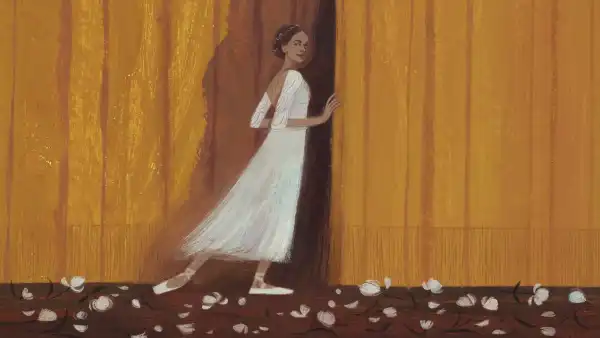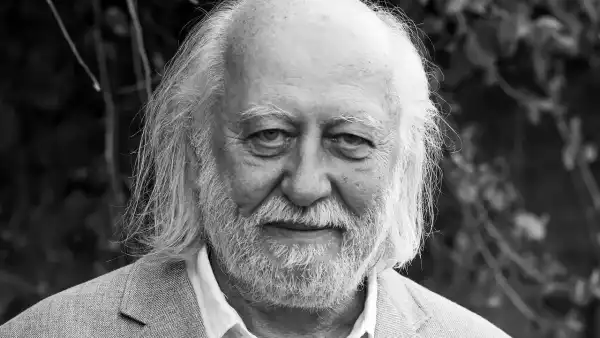
Save this storySave this storySave this storySave this storyYou’re reading the Goings On newsletter, a guide to what we’re watching, listening to, and doing this week. Sign up to receive it in your inbox.
Stan Douglas is a powerful, one-of-a-kind artist who doesn’t declare his importance through flash or by making press-ready declarations about how to look at his various films and photographs through the lens of autobiography. Instead, he digs deeply through and around images that speak volumes about the poignancy of being, especially as history disappears us. Born in Vancouver, where he still lives and works, the now sixty-four-year-old master has dedicated his working life to making art about the experience of storytelling—all those stories, as Joan Didion once said, we tell ourselves in order to live.
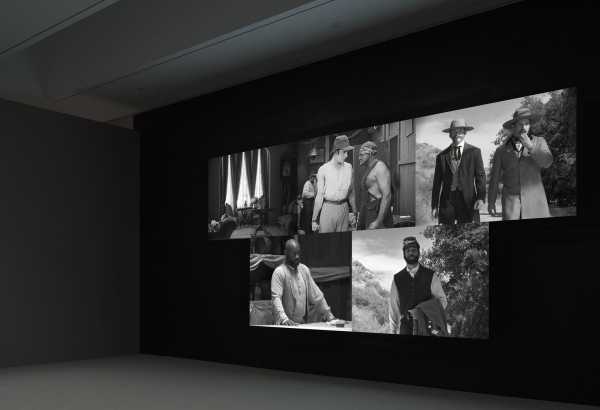
Installation view of “Birth of a Nation.”Art work © Stan Douglas / Courtesy the artist / Victoria Miro / David Zwirner; Photograph by Olympia Shannon
In his outstanding and ambitious show “Ghostlight” (on view at the Hessel Museum of Art, at Bard College, in Annandale-on-Hudson, N.Y., through Nov. 30), curated with insight by Lauren Cornell, Douglas crafts a world that describes and embraces the will of human beings of all stripes, creating a narrative that lives inside and outside the realm of understanding. We do not know why we need stories to live, but we do, and Douglas underscores this in several phenomenal pieces, such as his film adaptation, from 1995, of E. T. A. Hoffmann’s classic tale “Der Sandmann.” The installation alludes not only to Hoffmann’s gothic sense of fear, love, and the intricacies of memory—Douglas shot it in post-Wall Berlin—but to another of the artist’s great themes: how we show what is remembered. Shot on 16-mm. black-and-white film, the ghostly looking “Der Sandmann” was recorded at the old Ufa Studios, near Potsdam—a company that distributed Leni Riefenstahl’s films—and shows a landscape that evokes death and regrowth. Part of what Douglas means to discuss in the intersecting videos is Schrebergärten, a nineteenth-century urban plan in which the poor could grow their own gardens on small rented plots of land. One can see echoes of Syberberg’s “Hitler: A Film from Germany” (1977), certainly in terms of the director’s use of a gray that hovers somewhere between black and white, but Douglas’s work is not operatic—it combines the mythical and the everyday in a frame.
We live history from moment to moment, and one of the extraordinary things that film can do is re-create it. Still, Douglas doesn’t treat film as a documentary but as a document about storytelling and about how film can be used to elicit historical bigness. His “Birth of a Nation” (2025) is the show’s pièce de résistance. It’s a deconstruction of D. W. Griffith’s amazing film “The Birth of a Nation,” from 1915, which a number of critics and filmmakers consider the birth of modern cinema—and which introduced racist tropes that infect “entertainment” to this day. Douglas takes the pain and confusion of some of those images out of your heart by showing both the real feeling and the artificiality that go into telling any kind of story at all.—Hilton Als

About Town
Off Broadway
“Lord Nil: 7 Deadly Sins” consists of harrowing escape acts executed by the titular creator and star, an Italian who, after earning a degree in political science, naturally turned to illusionism. The stunts here are purportedly real, though, and each is tied, sometimes tenuously, to a cardinal sin. Between dodging axe blades and wriggling free of chains, the limber lord explains his intent: to inspire people to face their own terrors. A nice message, but for most of us that doesn’t involve dangling straitjacketed above flaming spikes, so practical applications are limited. More stirring, perhaps, is Lord Nil’s generously bared torso, a glistening invitation to test our prowess at escaping the snares of lust or envy.—Dan Stahl (Stage 42; through Aug. 31.)
Classical
As part of Summer for the City, Brooklyn Rider takes the stage at Lincoln Center’s Damrosch Park to kick off the celebration of the ensemble’s twentieth season. Special guests include the Syrian-born, Brooklyn-based clarinettist and composer Kinan Azmeh and the percussionist Mathias Kunzli, who may be the only common collaborator between Lauryn Hill and Yo-Yo Ma. Brooklyn Rider’s fête continues with five additional concerts at various Lincoln Center venues, including a performance of Kayhan Kalhor’s “Silent City,” written in remembrance of the massacre of Halabja; a meditation on Schoenberg’s pivotal Second String Quartet; and an ode to the four elements.—Jane Bua (Lincoln Center; Aug. 7-9.)
Pop Rock
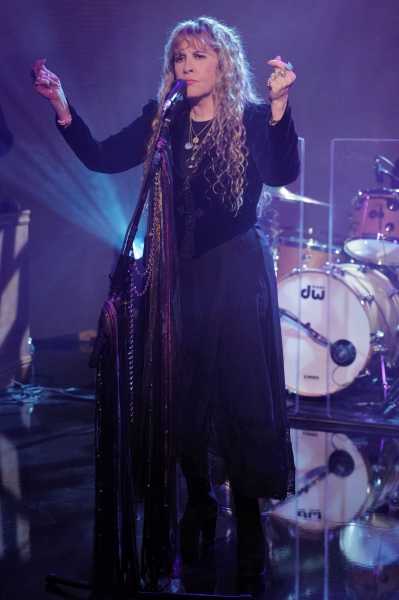
Photograph by Randy Holmes / Getty
As a member of the soft-rock band Fleetwood Mac, the spellbinding singer-songwriter Stevie Nicks contributed to a catalogue of records whose interior drama was only enhanced by soap-opera-level theatrics unfolding behind the scenes—among them the blockbuster LP “Rumours” (1977); its tumultuous, entangled follow-up, “Tusk” (1979); and “Tango in the Night,” from 1987, the swan song for an imploding unit. A wistful romanticist, Nicks was key to the group’s effectiveness, her voice both fragile and formidable, and she wrote several of the defining Fleetwood Mac songs, including “Dreams.” Her 1981 solo début, “Bella Donna,” made Nicks a star in her own right; now a Rock Hall inductee twice over, she has amassed a trove of heart-wrenching songs charged by a withering intensity.—Sheldon Pearce (Barclays Center; Aug. 8.)
Dance
The enterprising Tiler Peck has been a leading dancer at New York City Ballet for more than fifteen years, played a neurotic ballerina on Amy Sherman-Palladino’s “Étoile,” and created a number of ballets of her own. Now she curates “Ballet Festival: Jerome Robbins,” an array of miniatures, distributed over three programs. These include the charming pas de deux “Four Bagatelles,” to Beethoven; the seldom performed duo for two women “Rondo,” to Mozart; and “Suite of Dances,” a solo meditation on Bach that Robbins whipped up for Baryshnikov in 1994. The last will be performed on alternate nights by Roman Mejía (Peck’s husband) and Peck herself—the first time this solo has been taken on by a woman.—Marina Harss (Joyce; Aug. 12-17.)
Art
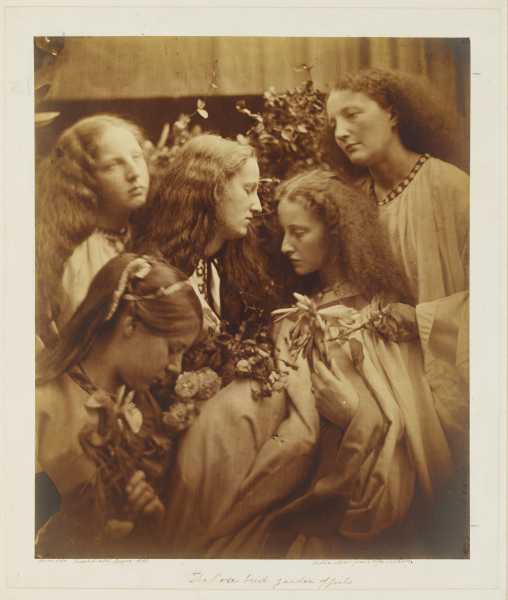
“The Rosebud Garden of Girls,” 1868.Photograph by Julia Margaret Cameron / Courtesy © The Royal Photographic Society Collection at the V&A
One of the great takeaways from the small, elegant, and wonder-filled show “Arresting Beauty: Julia Margaret Cameron” is how much fun Cameron must have been. Born in Calcutta to a trader father, she married Charles Hay Cameron, an investor in plantations in modern-day Sri Lanka, and raised eleven children; after moving to England in 1848, they became part of an art scene that included Alfred Tennyson. (Cameron was Virginia Woolf’s great-aunt.) One of her kids gave her a camera, and with it Cameron revolutionized photography by manipulating her exposures to soften and blur, for dramatic results. Among the best pictures here are of the botanical painter Marianne North, and of a pensive young boy named Freddy Gould, who looks at the lens with the calm certainty of knowing who he is.—Hilton Als (Morgan Library & Museum; through Sept. 14.)
Movies
Fear not: “The Naked Gun” hits the target, but barely. This reboot of the beloved franchise, centered on the Los Angeles Police Squad, is funny enough to sustain patience without rivalling the original’s wild charm. Liam Neeson plays Lt. Frank Drebin, Jr., whose overly violent response to a bank robbery gets him demoted; his investigation of a car accident connects to the robbery, and both lead him to an evil billionaire (Danny Huston) with a diabolical scheme. To thwart it, Frank teams up with a fellow-officer (Paul Walter Hauser) and a victim’s sister (Pamela Anderson), and some of the boisterous humor is playfully ribald. But, in Akiva Schaffer’s direction, the gleefully exaggerated slapstick doesn’t astonish, it only amuses; the film hardly achieves liftoff from its script.—Richard Brody (In wide release.)

Pick Three
Michael Schulman on cheeky new works that fetishize the old.
1. Filling the void left by “Titanique,” the Off Broadway comedy “Ginger Twinsies” (at the Orpheum) lampoons another cultural artifact of the late nineties: the Lindsay Lohan remake of “The Parent Trap.” The show, written and directed by Kevin Zak, stars the pointedly un-twinlike Russell Daniels and Aneesa Folds as the redheaded tweens separated at birth, with a scene-stealing Phillip Taratula as their gold-digging would-be stepmom. The wigs and the sex jokes are plentiful.
2. What’s campier than the above? Not much, but consider this: Zero Waste Daniel, the Brooklyn-based fashion brand founded by Daniel Silverstein, is marking the fortieth anniversary of the TV show “The Golden Girls” with a capsule collection, including cheesecake-print sweatshirts, banana-leaf-patterned bomber jackets, and bags illustrated with the four ladies’ faces. Through Aug. 17, the brand’s flagship store, in Bushwick, is outfitted as a “Golden Girls” dreamscape, with retro lounge furniture and Miami pastels.

Illustration by Zack Rosebrugh
3. The character actor Jeff Hiller is Emmy-nominated for his daffy yet heartfelt performance as a gay Kansan on HBO’s “Somebody Somewhere.” He also has a new memoir out, “Actress of a Certain Age.” Hiller, an avid reader of celebrity memoirs, titles each chapter after one of them, while recounting the indignities of being gay in Hollywood, his evolving relationship with the church, and studying abroad in Namibia. It’s funny on the page, but I recommend the audiobook, so you can hear Hiller’s Carol Burnett-like goofy deadpan and trademark giggle.

On and Off the Avenue
Rachel Syme on SPF nostalgia.
Sunscreen, as a consumer good, tends to fall into the gloppy gray area between need and want. We are all aware that the sun, as dazzling and mood-bolstering as it may be, is an unmerciful adversary. Sustained exposure to UV radiation, the science tells us, comes with a roster of terrible potentialities, from skin cancer to cataracts to leathery wrinkles. So the need is clear; but what about the want? I have rarely stood in the sunblock aisle of a drugstore and found myself overwhelmed with desire. My concerns are practical: I am pale and quick to crisp. Give me high SPF, at a reasonably low price, and I’m sold.

Illustration by Joanne Joo
But, back in the summer of 2021, when I was newly vaccinated and practically feral for sensuous experiences, I found myself drawn to a brand of sunscreen, called Vacation, that I’d never seen before. Or had I? The bottle of the brand’s Classic Lotion, a cream-colored tube with squiggly neon-blue lettering and a lemon-yellow cap, looked like a relic from 1985. I felt an inexplicable pang of deep nostalgia for the stuff, which touted itself as “The World’s Best-Smelling Sunscreen,” even though it was, technically, new to the market. I bought a small bottle (then $20, now $15), and, upon sniffing it, further tumbled out of time. There was the traditional banana and coconut, but also something alluringly vintage and plastic. (I later learned the note was eau de pool toy.)
The yearning I felt for this faux-vintage sunscreen was, as it turns out, entirely by design. Vacation was launched, four years ago, by three friends—Lach Hall, Marty Bell, and Dakota Green—seemingly as an exercise in kitschy revivalism. The company, which sells what they call “leisure-enhancing” sun protection, aims to summon the carefree aesthetic of the gaudy tanning-oil era (without, perhaps, the carefree attitude toward melanoma). “The whole mission was to make sunscreen fun,” Hall told me recently. The brand’s products lean toward the stunty; there’s a whipped sunscreen that comes in an aerosol can, a crystal-clear face jelly, a UV-deflecting baby oil. In 2022, the brand kicked off the Orange Gelée Revival Project, a mission to resurrect the cultish Bain de Soleil product, a tangerine-hued unguent that launched in 1925 and became coveted, despite its pitiful SPF 4, for its strange texture (somewhere between Vaseline and toothpaste) and signature aroma (neroli, white flowers). When Bayer discontinued Bain de Soleil in 2019, more than eleven thousand people signed a petition in protest. Last year, Vacation’s Orange Geleé—freshly pumped up to SPF 30, while channelling the original’s scent—finally launched, to a wait list of fifteen thousand. The throwback tactics are clearly paying off; Vacation’s wares are now sold in Target, Ulta, and other major retailers, and last month the Wall Street Journal reported that Vacation stands to make $80 million this year.
P.S. Good stuff on the internet:
- Diary of a popcorn seller
- The rise of heterofatalism
- What Gay Talese hates
Sourse: newyorker.com



